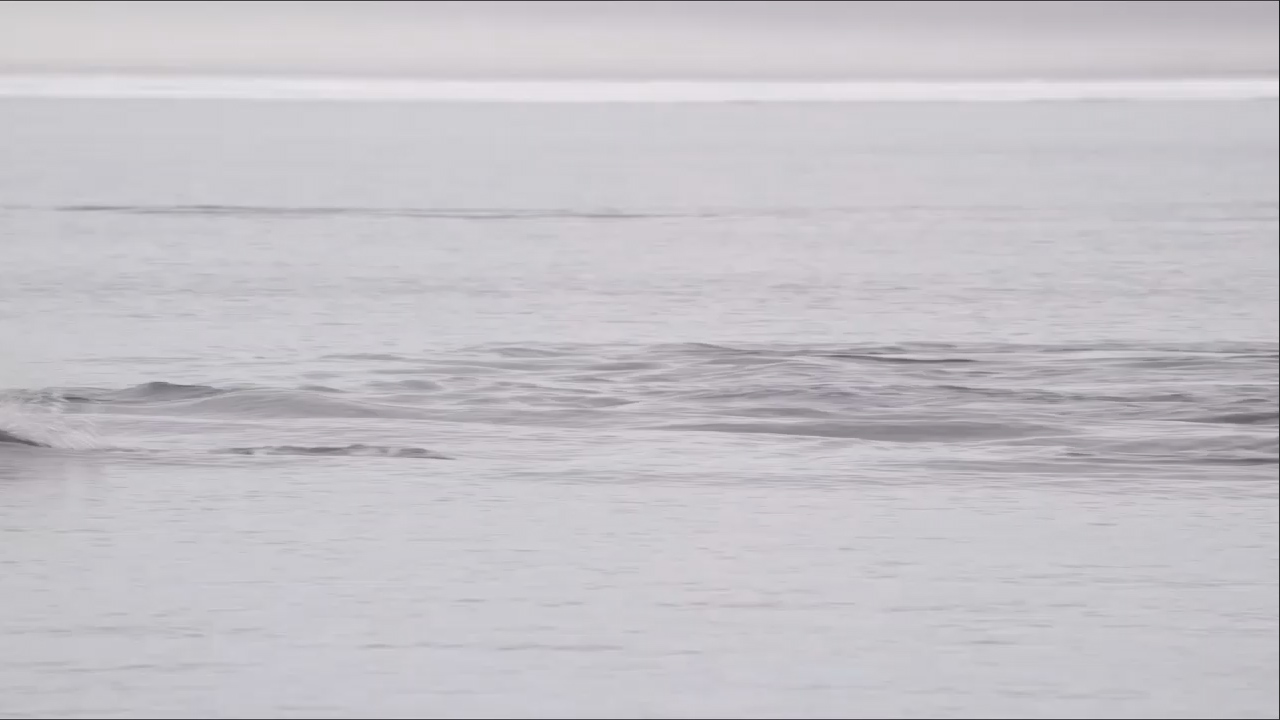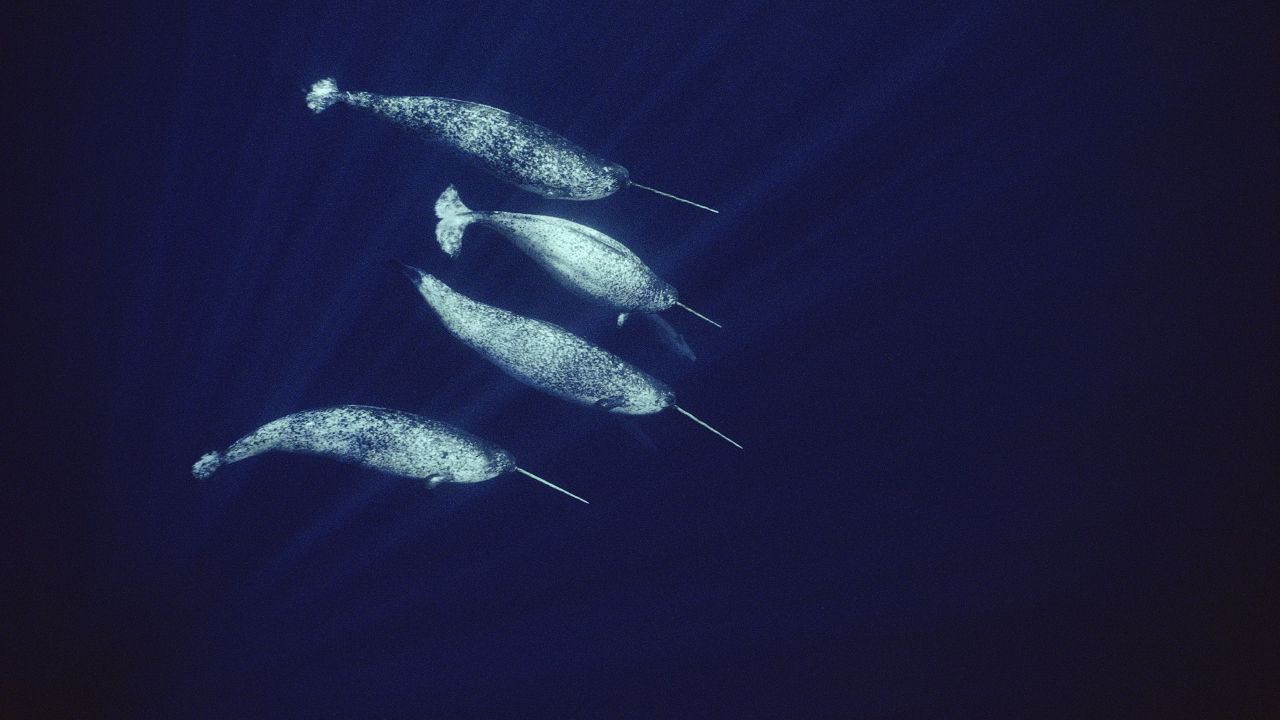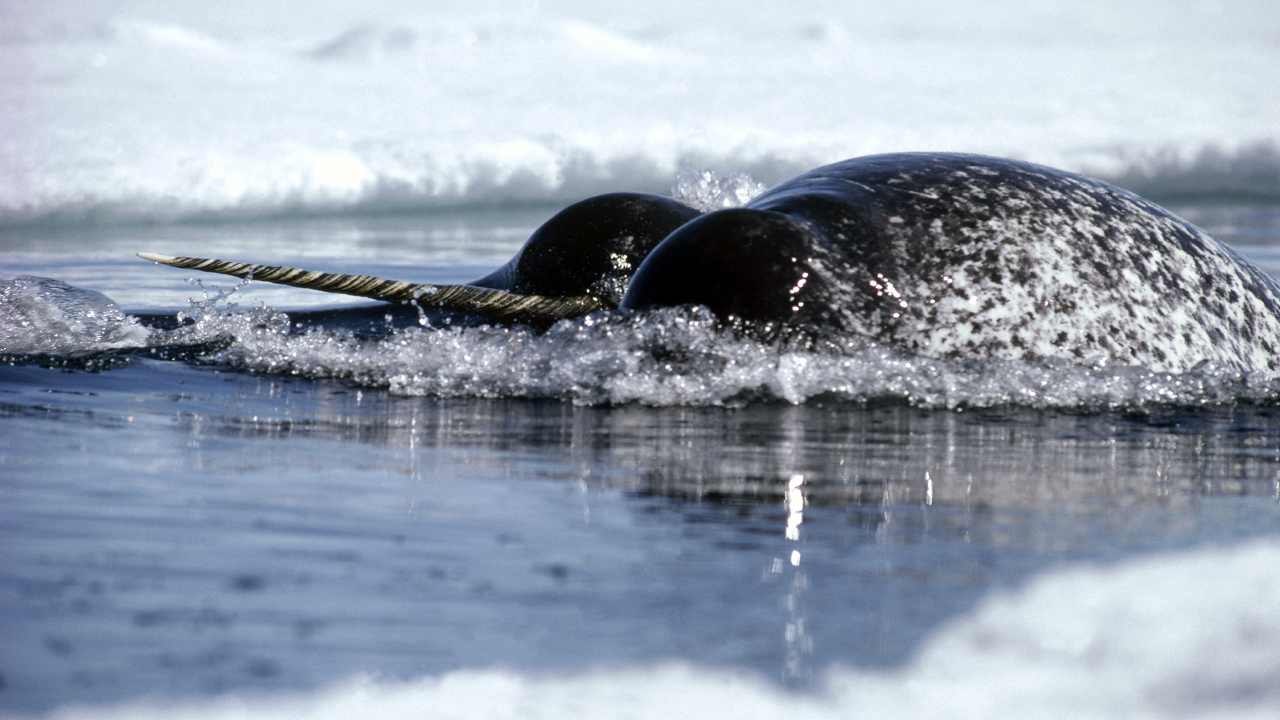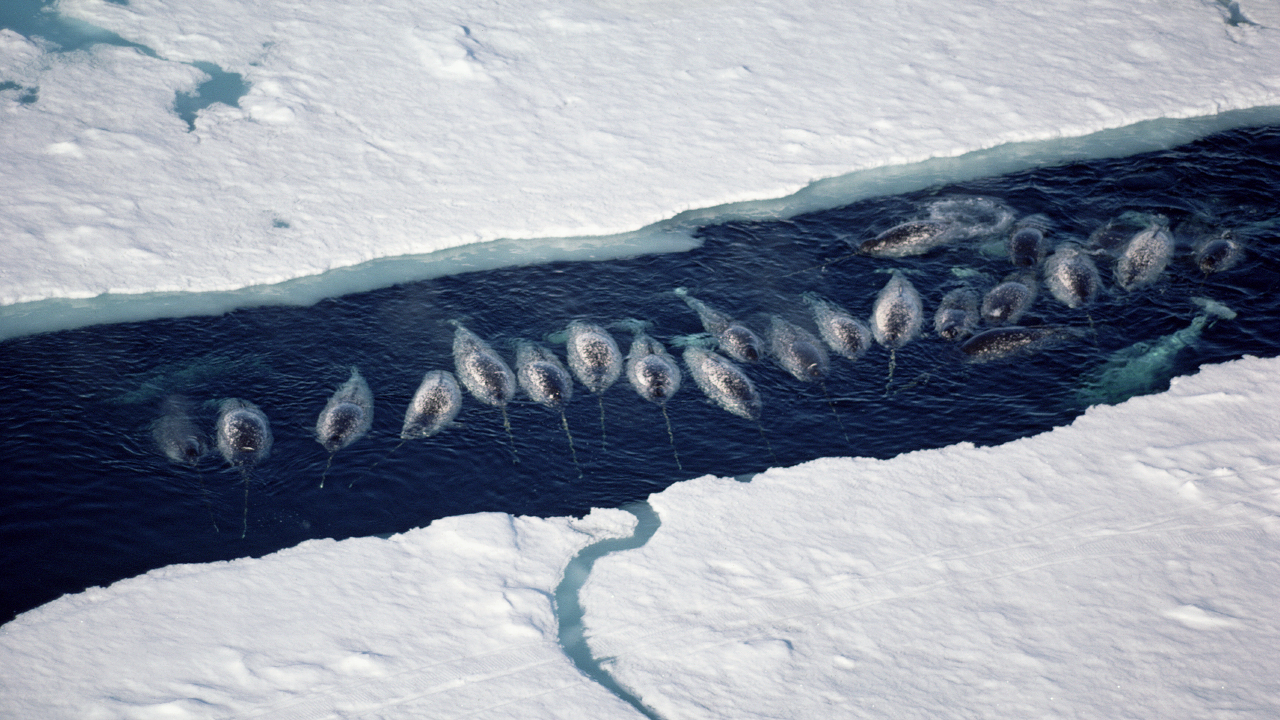Narwhal
Monodon monoceros
-
 The main characteristic of the narwhal is its tusk (a protruding canine tooth) that can reach 2.5 m in fully grown males. The tooth grows out from the upper jaw and spirals to the left. The scientific name for the species, Monodon Monoceros, means the whale with one tooth and one horn.
The main characteristic of the narwhal is its tusk (a protruding canine tooth) that can reach 2.5 m in fully grown males. The tooth grows out from the upper jaw and spirals to the left. The scientific name for the species, Monodon Monoceros, means the whale with one tooth and one horn. -
 Narwhals have a cylindrical body with no dorsal fin and a round head with a small mouth on their blunt snout. This compact body shape, plus a thick layer of blubber, retains heat in the icy Arctic waters in which they live.
Narwhals have a cylindrical body with no dorsal fin and a round head with a small mouth on their blunt snout. This compact body shape, plus a thick layer of blubber, retains heat in the icy Arctic waters in which they live. -
 The narwhal’s range is in the high Arctic, for the most part to the north of Iceland, although they have often been spotted from the north coast, mostly as floating remains.
The narwhal’s range is in the high Arctic, for the most part to the north of Iceland, although they have often been spotted from the north coast, mostly as floating remains. -
 Narwhals can dive down to 1500 m deep; they are among the deepest-diving mammals. The duration of a narwhal dive is from 7–25 minutes.
Narwhals can dive down to 1500 m deep; they are among the deepest-diving mammals. The duration of a narwhal dive is from 7–25 minutes. -
 Narwhal calves are around 80 kg at birth and continue to nurse for up to two years. Female narwhals calve every three years on average.
Narwhal calves are around 80 kg at birth and continue to nurse for up to two years. Female narwhals calve every three years on average.
